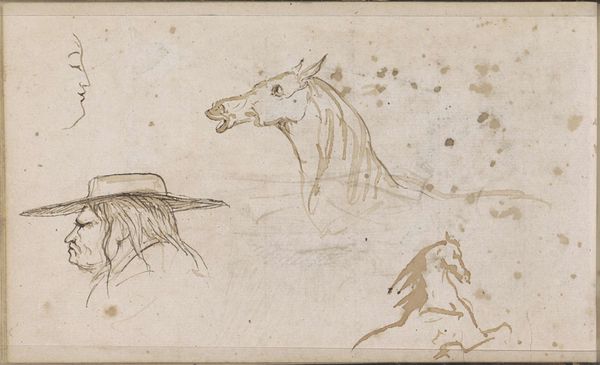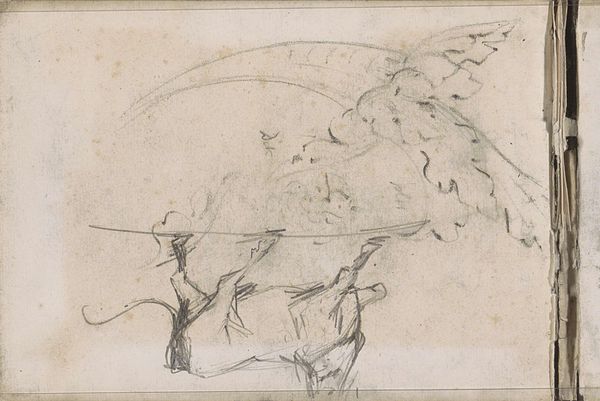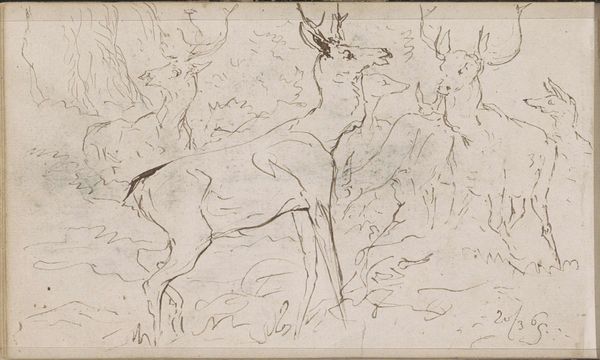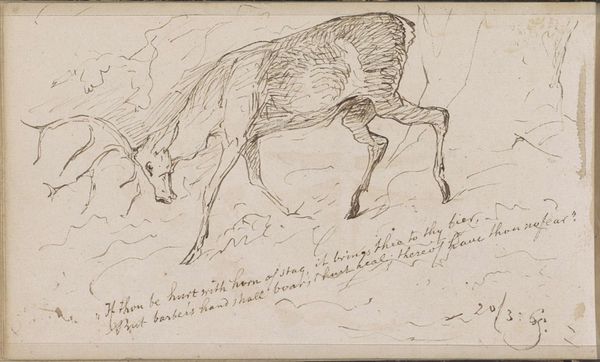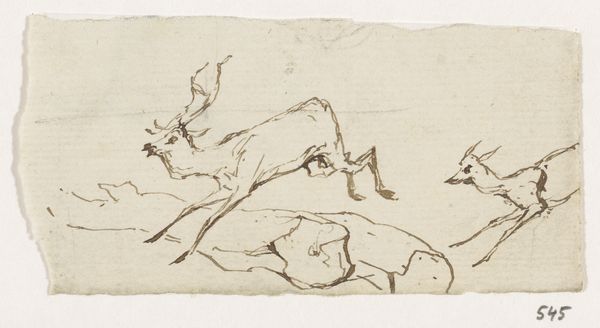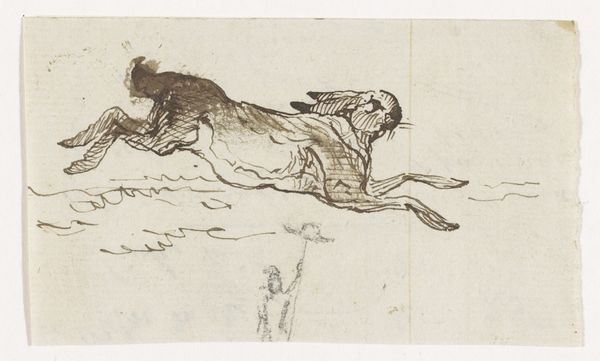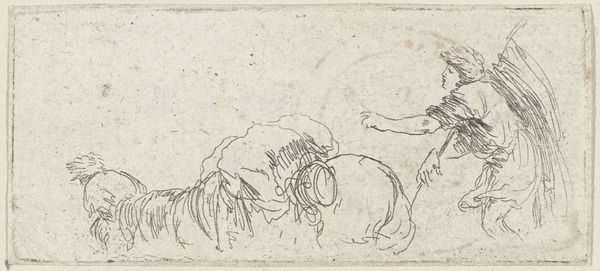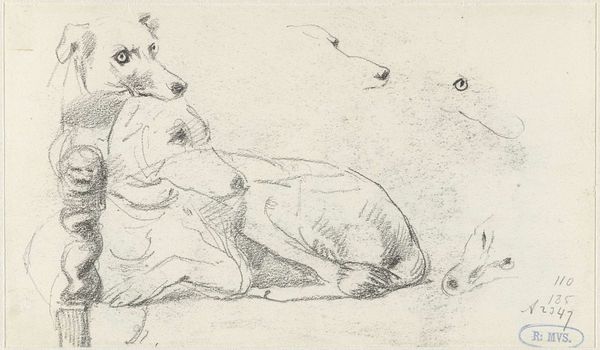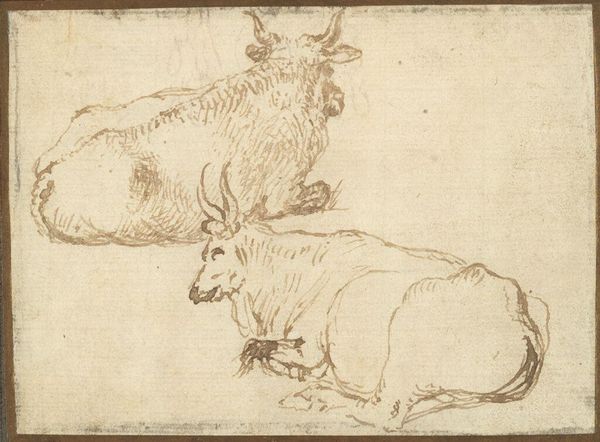
Copyright: Rijks Museum: Open Domain
Curator: We're looking at a work from 1865 by Johannes Tavenraat. It's an ink drawing on paper titled "Hert, springend over een boomstam"— "Deer, Jumping over a Tree Trunk." Editor: It's such a dynamic piece! I'm immediately struck by the deer's energy; it practically leaps off the page. There’s almost a frantic urgency to its movement, emphasized by the spare use of line. Curator: Precisely. And consider the labor involved here. The swift, assured strokes suggest a confident hand, likely a study done in preparation for a larger work. Notice the contrast between the finer lines used to define the animal and the more assertive strokes defining the fallen tree trunk. The relative availability of paper and ink in the 19th century also influences the prevalence of drawings such as these. Editor: The tree trunk—a symbol of fallen nature, maybe even mortality. The deer's leap *over* it, I think, becomes a symbol of survival, a defiance of death or the natural cycle. It makes me wonder what kind of story Tavenraat might have had in mind. Is this flight? Or play? Curator: It could speak to land usage disputes, pressures on the animal's natural habitat forcing it to overcome obstacles imposed by resource extraction or deforestation in the period, for example. What does the depiction tell us about this dynamic? How does it challenge artistic notions of nature? Editor: The stag's antlers could signal masculine virility and dominance; traditionally deer are associated with the hunt and by extension with royal power. But here, there's nothing regal, it's a moment of sheer survival. A subversion, perhaps? Curator: Right, disrupting that trope with such frantic motion in humble materials... the availability of mass-produced paper and ink making the medium a democratic surface to represent such traditionally loaded symbolism on a broader scale... It’s also interesting to consider its status as a drawing, as opposed to a painting. This lends itself to further deconstruction, not simply the finished artwork for display, but a step on a creative path, as it were. Editor: This piece shows how imagery embedded with meaning evolves, shifting to reflect both continuity and adaptation over time. What starts out signaling authority can take on a more complex aspect when viewed through a modern lens. Curator: It's really been rewarding examining the piece from both vantage points: observing materials, and their wider significance... It helps recontextualise the drawing as more than just an artistic observation of wildlife in landscape, doesn't it? Editor: I wholeheartedly agree. Considering both production and visual symbolism provides a richer understanding of its layered complexity.
Comments
No comments
Be the first to comment and join the conversation on the ultimate creative platform.
